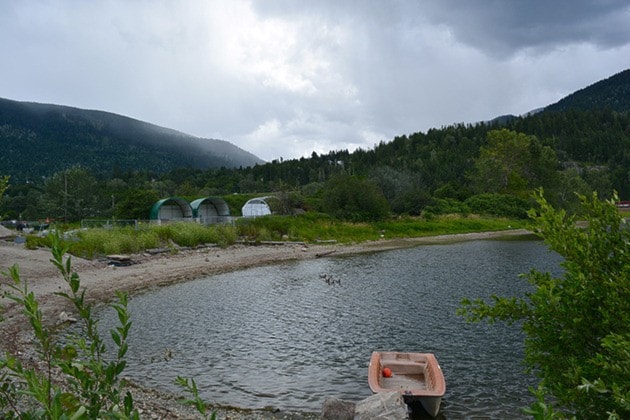The lakeshore land that formerly housed the transfer station is slated to become a park. It’s part of the city’s plan to develop and enhance Cottonwood Creek all the way to the waterfront.
But it’s not that simple. Until the early 1980s, the 4.6 acres at 70 Lakeside Drive was used as a garbage dump, and the garbage is still there, underground.
The standard to which the land has to be remediated to allow for park use is unclear. That decision will be made by the provincial ministry of the environment.
 Amy Wilson of the Regional District of Central Kootenay (RDCK) says it is not certain that the subterranean garbage would have to be removed because it may have been there long enough for any contaminants to be degraded or leached out.
Amy Wilson of the Regional District of Central Kootenay (RDCK) says it is not certain that the subterranean garbage would have to be removed because it may have been there long enough for any contaminants to be degraded or leached out.
The RDCK is involved because it ran the transfer station and is responsible for waste on a regional level.
The land is currently the site of the regional district’s recycle bins and a city public works yard.
“When we did the waterfront visioning a few years ago,” says Mayor Deb Kozak, “it made sense that this would become a usable space for the community, so we thought, along our waterfront we already have Red Sands, that will be an anchor park, and we have Lakeside Park in the middle, and wouldn’t it be wonderful to have a park at the other end as well.
“In that little bay down there are are ducks and all kinds of waterfowl,” she says, “so we could have a peaceful park where people could sit and watch the ducks.”
Kozak is the city representative on the RDCK board and on its waste recovery committee.
The entire lakeshore from Cottonwood Creek east past the mall was used as a dump for garbage and industrial waste for decades. Although the waste was removed to build the mall parking lot, it’s still there beneath the airport and the former transfer station.
The waste was dumped beside, and often into, the lake. Sometime prior to the 1970s, the city constructed a barrier of old car bodies in the lake to keep the garbage from being carried away by the current.
Anyone walking along the lakeshore below the heliport today can see old bottles, cans, and plastic falling out of the cutbank below the dog walk. It’s a legacy of the relaxed attitude to garbage that started to change with the beginnings of the environmental movement in the 1970s.
Wilson told the Star that CP Rail, which owns the adjacent land south of the site, has been studying and reporting on the level of contamination for years, and in 2013 it reported to the environment ministry and to the RDCK that there was high-risk cadmium in the groundwater, both on its own property and on the city’s.
But a more recent CP Rail study shows the cadmium is no longer there at significant levels, and the company has asked the ministry to remove the high-risk designation, according to Wilson.
The city and the regional district are waiting for that response.
“We did not want to do closure planning and work toward a park if there was going to be a roadblock because of that, so we need to know the ministry’s response,” says Wilson.
The Ministry of the Environment, asked by the Star in an email when it might respond to CP Rail, did not reply. CP Rail declined to provide any information or comment to the Star for this article.
To start work on the park, the city and the RDCK need guidelines from the ministry on what it will take to remediate the land to park level.
They will have to then decide on the cost of remediation to park standards, and compare that with the cost of leaving the land as commercial-industrial. Currently the city has the property designated as a park in the Official Community Plan.
The relative roles of the city and the RDCK in the park’s development and funding are not yet clear but are being worked out, says Wilson.
While it waits for the CP Rail and the ministry, the RDCK has commissioned a scientific study of its own to determine what it would take to turn the site into a park and whether there are data gaps or other contaminants they need to test for. That report is expected to be finished by the end of July.
